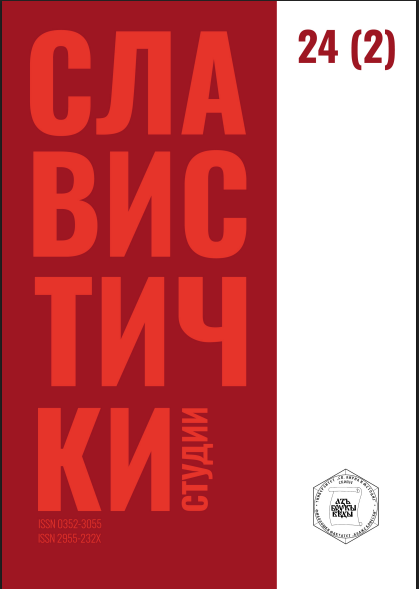PAINTING, SCULPTURE, POETRY: VERMEER AND BRÂNCUȘI IN POETIC EKPHRASES OF SILENCE IN THE WORKS OF WOJCIECH WENCEL AND GRIGORE VIERU
DOI:
https://doi.org/10.37834/SS24249-64Keywords:
ekphrastic poem, silence, Brâncuși, VermeerAbstract
Associative thinking, which transforms the abstract into the “visible,” emerges in both Johannes Vermeer’s paintings and Constantin Brâncuși’s sculptures. Within the oeuvre of these two globally renowned artists – working almost three centuries apart and across different artistic media – a dialectic arises between the visible and the hidden, presence and absence, requiring efforts in codifying and deciphering meaning. Polish poets such as Wisława Szymborska, Adam Zagajewski, and Wojciech Wencel have shown remarkable sensitivity to this internal tension, sustained through contrasting elements and attitudes permeating Vermeer’s paintings. Similarly, Brâncuși’s sculpture has inspired lyrical reflections on the “leap into eternity,” rooted in cultural experiences of artistic forms such as gestural painting and sculpture, among Romanian poets Ion Vinea, Lucian Blaga, Grigore Vieru, and Ana Blandiana. The most visible and suggestive tension, however, appears between silence and speech, quietude and language – analogous to the dialectics of non-being and existence. Vieru employs a poetics of silent discretion and contemplative simplicity, marked by nuances of expectation and profound absence, echoing Brâncuși’s sculpture The Table of Silence, explicitly referenced in the ekphrasis entitled Brâncuși. In the Romanian sculptor’s work, silence is not passive; during its repose, it alters and inverts the world, inviting focused reflection. Around the empty table with its vacant chairs, words fall silent, allowing silence to acquire meaning and become profoundly suggestive. Thus emerges a space for what Romanian Orthodox priest George Remete describes as “silence-strength, silence-spirit, silence-idea.” Conversely, silence in Vermeer’s work is dynamic and vibrant; it is accompanied by movement, non-verbal emotions, turmoil of soul and mind, and luminous contemplation.
References
Bătrînu S. (2020). Rezumatul tezei de doctorat Reprezentări ekphrastice în literatură, cond. științific prof. univ. dr. Eugenia-Simona Antofi. Galați.
Berger R. (1976). Artă şi comunicare. Bucureşti: Meridiane. Cimpoi M. (2001). Brâncuşi şi poeţii români, „Metaliteratură”, 3.
Ciobanu M., Negriu D. (2005). Dicţionar de motive şi simboluri literare.
Chişinău.
Dynkowska J. (2021). Apokryficzność i ekfrastyczność jako komplementarne poetyki intertekstualne. Łódź: Wydawnictwo Uniwersytetu Łódzkiego.
Grigorescu D. (2001). Povestea artelor surori. Relațiile dintre literatură și artele vizuale. București: Atos.
Le Breton D. (2001). Despre Tăcere. București: All.
Marino A. (2010). Dintr-un dicționar de idei literare. Cluj-Napoca: Argonaut. Noica C. (1987). Cuvînt împreună despre rostirea românească. București:
Eminescu.
Papu E. (1996). Galaxia Blaga-Brâncuși [w:] Dimensiunea metafizică a operei
lui Lucian Blaga. Antologie de texte din și despre opera filosofică, wyb. i wstęp A. Botez. București.
Remete G. (2008). Cunoaşterea prin tăcere. Tăcerea ca filosofie, tom 4.
București: Paideia.
Słodczyk R. (2020). Ekfraza, hypotypoza, przekład. Interferencje literatury i malarstwa w prozie włoskiej i eseistyce polskiej XX wieku. Kraków: Wydawnictwo Uniwersytetu Jagiellońskiego.
Stîrcea-Crăciun M. (2020). Opera lui Brâncuși în România. Simbolismul hylesic: O abordare hermeneutică endogenă. București: Vremea.
Vallentin, A. (1968). Leonardo da Vinci, tom I, tłum. Constantin Țoiu. București: Meridiane.
Vianu, T. (1966). Postume. București: Editura pentru Literatură Universală. Vrânceanu A. (2009). Descrierea operei de artă în romanele lui Camil Petrescu,
„Analele Universității București”, s. 144-158.
Vrânceanu A. (2010). Tabloul din cuvinte: studii de literatură comparată.
București.
Walicki M. (1972). Vermeer. Bucureşti: Meridiane.
Downloads
Published
Issue
Section
License
Copyright © 2025 Blaže Koneski Faculty of Philology, Skopje
Slavistički studii
Славистички студии



